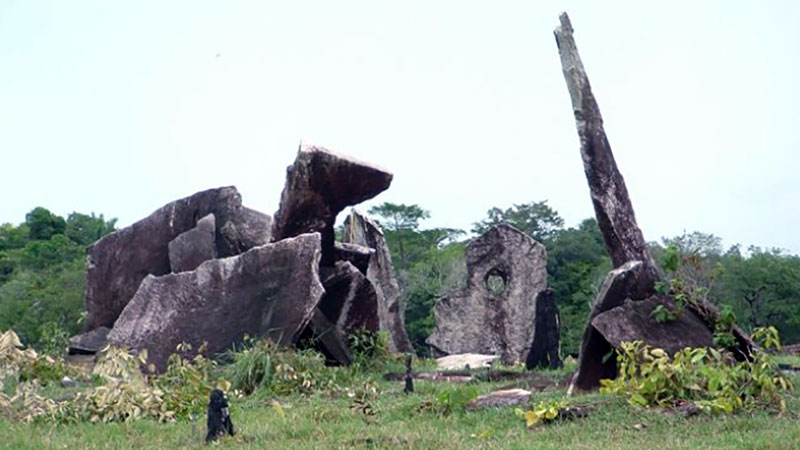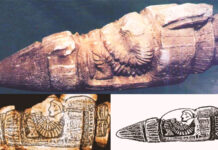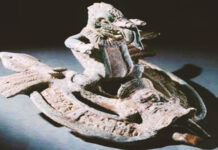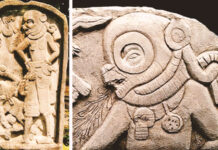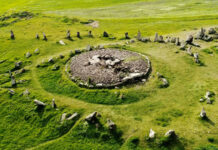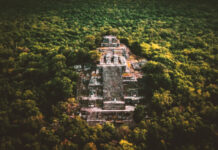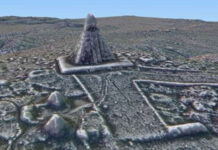The relationship between the equinox and the distribution of the megalithic monuments of Calçoene in the state of Amapá was discovered by Marcomede Rangel of the National Observatory. The set of rocks arranged in a circular shape in Calçoene allows us to establish both the arrival of the winter solstice in the northern hemisphere and the equinox. The Brazilian archaeological site is located 384 km north of Macapá, the capital of the state of Amapá, in latitudes of the northern hemisphere and about 14 km from the city of Calçoene.
As in Stonehenge, the Brazilian archaeological site has several large stones, some up to four meters high buried in the ground forming a circle 30 meters in diameter. The place is on top of a hill and the stones, according to Rangel, have a small inclination related to the movement of the Sun in the sky. In the place that dates back approximately 2000 years, belongs to an unknown civilization and has already been declared Megalithic Heritage of Brazil, it was discovered in 1905 by researcher Emilio Goeldi.
The archaeological site was studied at the beginning of the last century by the German ethnologist Curt Niemandaju and in the middle of the last century the Americans Cliffords Evans and Betty Meggers also became interested in the region. At the beginning of this century, after a long time without studies, the site was the object of research by Brazilian archaeologists Mariana Petry and João Darcy Moura Santana.
The latter discovered in 2005 a relationship between the arrangement of the stones and the winter solstice in the northern hemisphere. Rangel later discovered in December 2009 that the distribution of the stones also has a relationship with the equinox, which is the day when the Sun moves exactly over the equator and when night and day have the same duration.
The equinox was an important date for ancient people, as they could base on this schedule planting and harvesting. The relationship between the archaeological site and the equinox was determined with the help of GPS, precision compasses, and magnetic declination correction calculations.
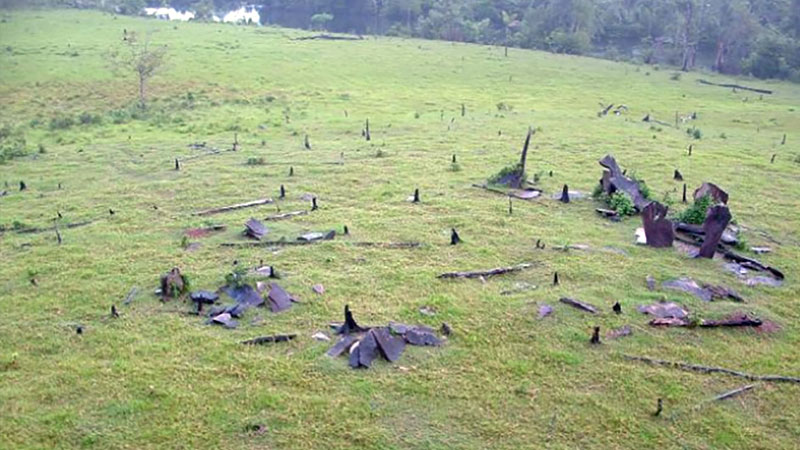
An observation of the place on the day of the equinox allowed us to verify that when the Sun sets, the light of the star passes through the hole of the stones that is the size of the palm of a hand and projects itself on another stone located 15 meters away and inclined.
The use of the Kernr theodolite also made it possible to discover that the terrestrial equator passes over both stones, an imaginary line that the Sun runs along at the equinoxes. The data obtained will be used to make a map of the sky that allows us to identify other relationships between the circle and the brightest stars and the Moon.
The archaeological site of Calçoene, in the north of the State of Amapá, 384 km from the capital Macapá, at the latitude of +2 degrees 37′ (Northern Hemisphere), has several monolithic stones that are stuck in the ground, some up to four meters high.
They are classified as menhirs (stones) and cromlech-type (circular in shape), found in other places in the world. The site is on top of a hill, and the stones have a small inclination, related to the movement of the Sun in the sky, in a circle of 30 meters in diameter. The largest stones are in a 20-meter circle.
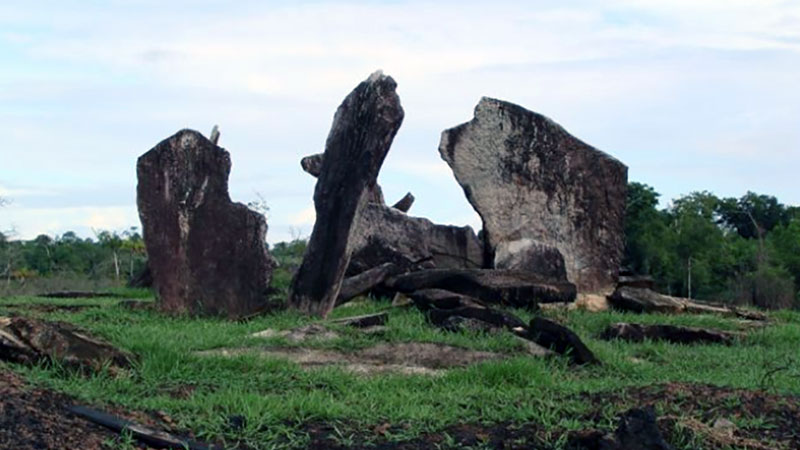
According to data from the Institute of Scientific and Technological Research of the State of Amapá (Iepa), the site was discovered by Emilio Goeldi in 1905, and dates from 1,500 to 2,000 years ago, and was later studied by the German ethnologist Curt Niemandaju, in the early 1920s. In the 50s, the American archaeologist couple Cliffords Evans and Betty Meggers were also studying the site, which is 14 km away from the center of the city of Calçoene.
But all this was forgotten for a long time and even many of the residents had never heard of the place. It was only from 2005/2006 that the archaeological site, which is already known as the “Brazilian Stonehenge”, and for the interest of the Government of the State of Amapá, began to be studied in detail by archaeologists Mariana Petry Cabral and João Darcy Moura Santana, from Iepa.
The site was cataloged by Iphan as Megalithic Site AP-CA-18. According to the two archaeologists, the relationship of some monolithic stones with the winter solstice (Northern hemisphere) was found.
More recently, between December 4 and 6, physicist Marcomede Rangel, from the National Observatory, one of the institutes of the Ministry of Science and Technology, went to the site for the second time and discovered a new relationship between these monolithic stones and the phenomenon of the equinox. It is the day when the Sun walks perfectly on the equator. It rises in the east and lies down in the west. The day is the same length as the night.
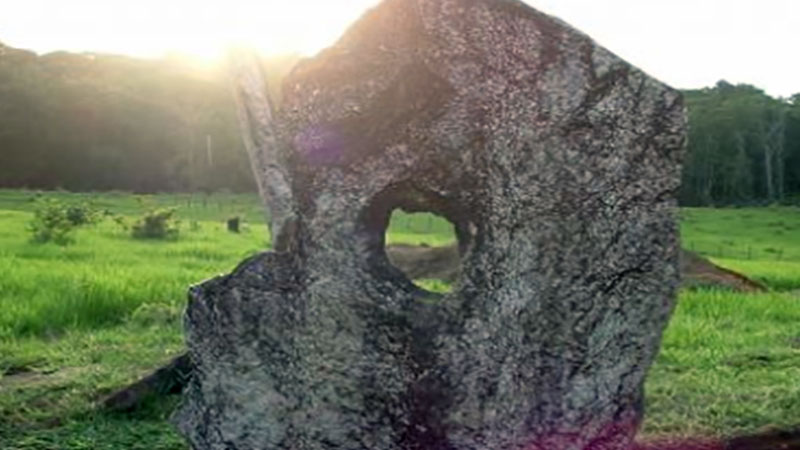
It is at this point that the Sun passes from one geographical hemisphere to another, determining the beginning of the seasons, which can be spring or autumn, if the place is north or south. Ancient people set the date for their activities, a calendar, such as a time to plant, harvest, etc., and even the periods of rain and drought.
With the use of a theodolite, GPS, compasses, tape measure and magnetic charts, Marcomede mapped the place, with the help of students from the tourism course at the Professional Education Center of Amapá (Cepa), in the so-called “Calçoene Expedition”, which was part of the International Year of Planet Earth (AIPT), instituted by Unesco. He had already visited the place last September, in the company of Paulo de Tarso Gurgel, a professor at Cepa, who was also on this expedition, the day before the Equinox, on September 22.
With the use of a precision compass and correction of magnetic declination, the researcher noticed the relationship with the Equinox. He then asked Ulisses Silva, from the Municipality of Calçoene, and Leilson Carmelo da Silva, known as Garrafinha, foreman of the site, to observe at sunset the light penetrate a stone, with a hole with the diameter of a palm, and project the ball of light, caused by sunlight, on another stone, about 15 meters away, and inclined. The result was positive.
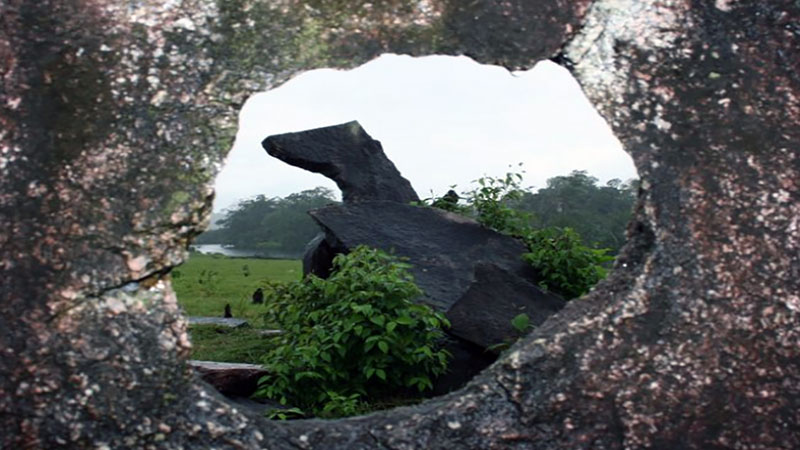
Now, in the measurements with the Kern theodolite DKM2-A, it has been confirmed that in these two stones passes the East-West line – the line of the Earth’s Equator, which the Sun travels at the Equinoxes. Thus, according to Marcomede Rangel, in addition to the Winter Solstice (Northern Hemisphere), which is when the Sun has its maximum distance from the Equator, there is also a relationship with the equinoxes at the megalithic site of Calçoene.
With the data obtained, a map of the sky will be made to identify other relationships with bright stars and the Moon, in the same way as the well-known Stonehenge, in the south of England.

